

Hilsea Lines
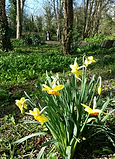
About Hilsea Lines
Hilsea Lines stretch for 2.5km along the north Shore of Portsea Island and covers an area of over 43 hectares. The site of the Hilsea lines was recognized early on as being of great strategic importance to the defence of the Portsmouth Royal Dockyards from landward attack. In 1544 Henry VIII erected the first bulwark on the northern side of Portscreek to command the only crossing point onto Portsea Island. It was in the 1750's with the renewal of war with France which led to the construction of entrenchments along the southern side of Portscreek. These are the forerunner of the Lines we see today.
Having fallen into disuse towards the end of the last century the ramparts, moats and land in front of them up to Portscreek has developed into a tremendously varied habitat for wildlife. These habitats include damp and dry grassland, hedgerows, fresh and brackish water areas, coastal mudflats, reedbeds and the only area of woodland on Portsea Island.
The Hilsea Lines Conservation area was acquired by Portsmouth City Council in 1974 and is now managed like an informal country park for conservation and quite recreation. Hilsea Lines was scheduled as an ancient monument in 1964 (Hampshire County Monuments No. 330) and a Conservation area in 1994. Sections of the site were designated as a SINC in 2003 with the whole of the site being classified as Public Open Space.

The Ogham Tree Trail
The Ogham Tree Trail was adapted from the original Tree trail that was conceived by Peter Roberts, The Portsmouth Countryside Ranger. The trail was the first of its kind in the country and consists of 13 trees. The walk takes approx 1hr along well formed pathways following the map in the flyer which is shown below and available as a pdf for you to download and print out. We hope to expand the trail before the Spring to include a few more trees.
The Trees on the Trail
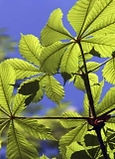
1. Horse Chestnut - Aesculus hippocastanum. Not an Ogham Tree
The horse chestnut was not introduced to Britain until the 17th century which is why it is not included in the Ogham. It is a good substitute wood for using in ogham sets as it is a nice light wood and warm neutral energy. Well known for conkers, the first record of the game of conkers appeared in 1848 from the Isle of Wight.

2. Elm – Ulmus minor. Not an Ogham Tree
The Elm produces an oval leaf which is asymmetrical (lopsided) at its base. The edges are toothed with the upper surface rough like sand paper. The Elm was once common but in the 20th centaury it was devas-tated by Dutch Elm disease. When the tree dies it often puts up suckers from the roots producing small trees which live for a number of years before they also succumb to the Dutch Elm disease. This is important here at the Lines because of a rare butterfly called the White-letter Hairstreak whose caterpillar is dependent upon the Elms flowers and leaves.
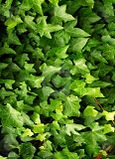
3. Ivy - Hedera Helix. - Ogham: Gort
Ivy represents the search for the self, and the wandering spirit of the Ivy can either restrict and bind or unite, it is associated both with freedom and attachment. The Ivy has determined warning power. Many of the trees have Ivy growing up them, this does not harm the tree but provides an important habitat for wildlife.
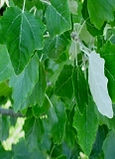
4. White Poplar – Populus alba / Aspen family - Ogham: Eadhadh
The Aspen is known as the Whispering tree due to the quivering of the leaves in the wind. The Aspen teaches us the need to listen to our inner voice and helps us overcome fear and teaches trust. The leaves are a glossy green colour on top but the undersides are pure white, the bark is pale grey pitted with distinctive diamondshaped marks.
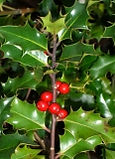
5. Holly – Ilex aquifolium. Ogham: Tinne
The evergreen Holly is a masculine tree and a symbol of potent life energy. It will help restore direction and balance in your life and unites the past with the present. Holly brings love and compassion and is a tree of protection, use the energy of Holly if you have relationship problems. Holly has a beautiful white wood which is great for carving and makes a nice wood to craft Ogham sticks from.
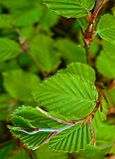
6. Hazel – Corylus avellana. Ogham: Coll
Hazel has the ability to connect the conscious with the unconscious and is good for bringing ideas to the surface and for transforming dreams into reality. It brings wisdom and knowledge, it is associated with meditation and an increase in psychic abilities and intuition. Due to Hazel coppicing the many trunks provide a strong link to the divine earth.
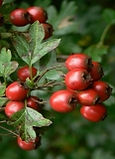
7. Hawthorn – Crataegus monogyna. Ogham: Huath
Hawthorn has the ability to open the heart to spiritual growth and love. The Hawthorn is good for reliving stress and releasing blocked energy, it also creates the ability to trust and let go of fear. It also is good for cleansing and protection.
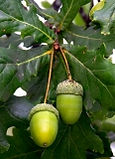
8. Oak – Quercus robor Ogham: Duir
The Oak, known as the 'king of trees', is probably the most well known and best loved tree in Britain. One of our longest living and largest trees has seen it used as symbol of strength and duration. The most sacred tree of the Druids. The Oak is a doorway to your inner spirituality, it restores the will and determination that may have become weakened in times of stress and will lead you to the truth. Look to the Oak to give you strength to overcome difficulties.
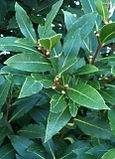
9. Bay – Laurus nobilis. Not an Ogham Tree
The dark evergreen leaf of the bay is most familiar as an aromatic leaf used in cooking. It is found here as a remnant of the kitchen gardens grown by families that used to live in the Bastions during the early 20th Century.
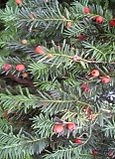
10. Yew – Taxus Baccata. Ogham: Idhadh
The Yew is an evergreen tree, it possesses needle like leaves (dark green above, light green below). The Yew is the last tree of the tree ogham and teaches us about rebirth and transformation and gives us access to the ancestors and spirit realms.
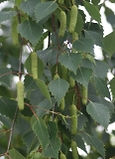
11. Silver Birch - Betual pendula. Ogham: Beithe
The Birch is the first tree of the tree ogham.In Celtic mythology the birch symbolised renewal and purification with birch twigs being used to drive out the spirits of the old year. It is a tree of great life giving properties and is always associated with new beginnings, physical and spiritual.
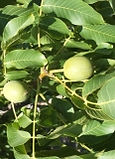
12. Walnut - Juglans regia. Not an Ogham Tree
The English Walnut is actually native to the Eastern Mediterranean and was introduced into Britain by the Romans for its edible nuts. The timber is also highly prized for its strength, elasticity and smoothness and was sought after by gunsmiths for making gun-stocks. This may explain why walnut was planted on the site.

13. Sycamore - Acer pseudoplatanus. Not an Ogham Tree
The sycamore is part of the Maple family which have distinctive five lobed leaves, this shape is called Palmate. If you hold your hand up and spread your fingers and compare it to a leaf you can see why.
Sycamore wood was traditionally used to make items for the kitchen, like spoons etc.
